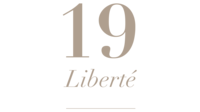January was a positive month for equity markets, whose upward trajectory continued in line with the last quarter of 2023. Global equities returned nearly 3% in euros, driven by the US markets (+3.5% in euros), which are still surfing the artificial intelligence wave. In Europe, the performance was positive, but remained more modest than that of the US, at 1.6%. Meanwhile, emerging markets are still struggling as they continue to bear the brunt of a Chinese economy in the midst of a real estate crisis.
The sectors of technology, whether in the US or Europe, and communication services were the most buoyant through the themes of artificial intelligence and semiconductors. Note to the positive performances of healthcare, driven by the theme of drugs for obesity, and finance, which is expected to benefit from a healthy interest margin and a strong economy.
On the bond front, movements held little surprise in store. The slight rise in yields at the beginning of the year corrected the slump that occurred in the last two months of last year. Thus, the US 10-year benchmark rate moved closer to 4.2% over the month after ending 2023 below 4%. Meanwhile, the Bund was close to 2.20% at the end of January after closing at around 2% last year.
In Europe, growth expectations remain fairly stable for this year, unlike in the US, where the figures continue to be revised upwards. While manufacturing indicators, i.e. PMIs, are showing some stabilisation in Europe and around the world, the main concern is that the European Central Bank (ECB) may delay the rate cuts it is expected to make this year. Although the risk of further economic deterioration seems limited for now, the risk of an overly restrictive ECB for too long remains and could delay the economic upturn expected for the second half of the year. The positive aspect in Europe is undoubtedly the unemployment rate, which continues to be historically low, not to mention a possible return of purchasing power this year thanks to wages that are expected to grow faster than prices.
In a macroeconomic environment in which inflation has been public enemy number 1 for the last two years, the markets again seem to be placing more emphasis on economic growth, the driving force behind corporate earnings. The battle against inflation is not quite over, but the markets anticipate it will no longer be a problem by the second half of the year. For this reason, they prefer to focus on growth, which remains resilient.
We still recommend staying firmly invested in the equity markets, with a geographical balance between US markets driven by the flagship theme of artificial intelligence on the one hand and inexpensive European markets on the other, as these could also benefit from a rebound in activity in Europe in the second half of the year. In terms of sectors, we have gradually increased the procyclicality of our allocation. In other words, we recommend overweighting sectors that can benefit from a still robust economy, such as consumer discretionary and financials, while reducing exposure to more defensive sectors such as utilities.
On the bond front, we recommend a moderate duration on the US to take advantage of the rate cuts expected this year by the Federal Reserve (Fed) while benefiting from a certain multiplier effect. In Europe, the recommended duration is a little longer and closer to the market's, given its more fragile economy.

